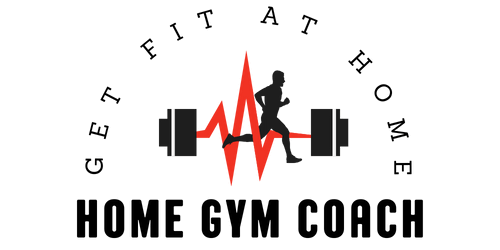So, you’ve created your own custom workout plan, tailored specifically to your goals and preferences. Now comes the crucial step of evaluating and adjusting it to ensure you’re maximizing your efforts and achieving optimal results. In this article, we’ll guide you through the process of assessing the effectiveness of your plan, identifying areas for improvement, and making necessary adjustments to keep your fitness journey on track. Whether you’re a beginner or an experienced gym-goer, this article will provide you with practical tips and strategies to fine-tune your custom workout plan and take your fitness game to the next level.
Evaluate your current fitness level
Assess your strength
To evaluate your current fitness level, start by assessing your strength. This can be done by performing exercises that target different muscle groups. Take note of the amount of weight you can lift and the number of repetitions you can do with proper form. This will give you a baseline of your current strength level.
Measure your cardiovascular endurance
Next, measure your cardiovascular endurance. This can be done through exercises that elevate your heart rate, such as running, cycling, or swimming. Pay attention to how long you can sustain the activity before feeling fatigued. This will help you understand your current cardiovascular fitness level.
Evaluate your flexibility
Lastly, evaluate your flexibility by performing stretches and observing your range of motion. Focus on different areas of your body like your hamstrings, hips, shoulders, and back. This will give you an idea of how flexible you are and if there are any areas that need improvement.
Analyze your goals
Define your fitness goals
After evaluating your current fitness level, it’s time to analyze your goals. Ask yourself what you want to achieve through your workout plan. Do you want to lose weight, build muscle, increase endurance, or improve overall health? Define your specific fitness goals so that you have a clear direction.
Consider time frame and feasibility
When setting your goals, consider the time frame and feasibility. Be realistic about what you can achieve within a given period of time. Setting unrealistic goals may lead to frustration or burnout. It’s better to set smaller, attainable goals and gradually work towards bigger ones.
Establish specific and measurable objectives
To ensure that your goals are achievable, establish specific and measurable objectives. For example, instead of saying you want to “lose weight,” set a specific target weight loss goal, such as “lose 10 pounds in three months.” By making your goals specific and measurable, you can track your progress more effectively.

Review your current workout plan
Assess the effectiveness of your exercises
Take a look at your current workout plan and assess the effectiveness of the exercises you’re performing. Are they targeting the muscle groups you want to focus on? Are they helping you achieve your goals? If not, consider replacing or modifying certain exercises to better align with your objectives.
Evaluate the frequency and duration of your workouts
Evaluate the frequency and duration of your workouts. Are you working out enough to see progress? Are you allowing enough time for rest and recovery? It’s important to strike a balance between challenging yourself and giving your body the necessary time to recover and repair.
Consider the balance of your routine
Consider the balance of your routine in terms of strength training, cardiovascular exercise, and flexibility training. Make sure you’re giving equal attention to all three components to have a well-rounded fitness plan. If you notice an imbalance, adjust your routine accordingly.
Listen to your body
Pay attention to signs of fatigue or pain
While following your current workout plan, pay close attention to signs of fatigue or pain. Pushing yourself too hard without proper rest can lead to injury or burnout. If you consistently feel excessively tired or experience pain, it may be a sign that you need to adjust your intensity or take more rest days.
Determine if you’re constantly pushing yourself too hard or not enough
Evaluate whether you’re constantly pushing yourself too hard or not enough. It’s important to challenge yourself to see progress, but pushing too hard can lead to overtraining. On the other hand, not pushing yourself enough may result in minimal gains. Find the right balance that allows you to make progress while avoiding injury or plateauing.
Consider your stress levels and recovery time
Take into consideration your stress levels and recovery time. Physical exercise is a stressor on the body, and if combined with high levels of emotional or mental stress, it can hinder your progress. Make sure to manage your stress levels, prioritize recovery, and listen to your body when it’s telling you to take a break.

Seek professional guidance
Consult a personal trainer
If you’re unsure about evaluating and adjusting your workout plan on your own, consider consulting a personal trainer. A qualified trainer can assess your current fitness level, help you define your goals, and create a personalized workout plan that takes into account your individual needs and preferences.
Ask for advice from a fitness expert
Additionally, ask for advice from a fitness expert. This could be a coach, a physical therapist, or a trusted fitness professional. They can provide valuable insights and help you make informed decisions about your workout plan.
Consider getting a fitness assessment
Consider getting a fitness assessment to gain a better understanding of your current fitness level. This can include measurements of body composition, cardiovascular fitness tests, and strength assessments. A fitness assessment can provide you with valuable information that can guide you in evaluating and adjusting your workout plan.
Make necessary adjustments
Increase or decrease intensity
Based on your assessments, you may need to increase or decrease the intensity of your workouts. If you find that your workouts are too easy and you’re not seeing progress, consider increasing the weight, reps, or sets. On the other hand, if you’re constantly fatigued or experiencing pain, it may be necessary to decrease the intensity to avoid overtraining.
Modify exercises or add variations
Modify exercises or add variations to keep your workouts challenging and engaging. Your body can adapt to repetitive movements, so adding different exercises or variations can help stimulate new muscle growth and prevent boredom. Don’t be afraid to try new exercises or seek guidance on modifying existing ones.
Adjust the number of sets and repetitions
Adjust the number of sets and repetitions based on your goals and progress. If your goal is strength and muscle building, you may need to increase the number of sets and decrease the number of reps with heavier weights. If your goal is endurance, you may need to decrease the number of sets and increase the number of reps with lighter weights.

Reassess your goals and progress
Regularly track your progress
Regularly track your progress to see if you’re moving closer to your goals. Keep a workout journal or use a fitness tracking app to record your workouts, sets, reps, and weights. This will allow you to see your progress over time and make adjustments as needed.
Evaluate if you’re meeting your goals
Evaluate whether you’re meeting your goals or if adjustments need to be made. Look at the specific and measurable objectives you set earlier and assess your progress towards achieving them. If you’re not making the desired progress, reassess your plan and make necessary adjustments.
Adjust goals according to your progress
Lastly, adjust your goals according to your progress. As you make progress and achieve smaller goals, it’s important to set new ones to keep yourself motivated and challenged. Be flexible with your goals and adjust them as you gain a deeper understanding of your capabilities and preferences.
Consider external factors
Evaluate changes in your schedule or lifestyle
Consider any changes in your schedule or lifestyle that may impact your workout plan. Changes in work hours, family commitments, or personal obligations may require you to modify your routine. Be adaptable and find ways to incorporate exercise into your new schedule or make adjustments accordingly.
Factor in external stressors or events
Factor in external stressors or events that may affect your energy levels or motivation. High-stress periods or significant life events may require you to adjust your workout intensity or take additional rest days. Be aware of these factors and be kind to yourself during challenging times.
Adjust your plan to accommodate these factors
Adjust your plan to accommodate these external factors. This may involve altering the frequency, intensity, or duration of your workouts. Remember that consistency is key, and making adjustments to your plan will help you stay on track even when life throws you curveballs.

Implement a gradual approach
Avoid drastic changes in routine
When making adjustments to your workout plan, avoid making drastic changes all at once. Your body needs time to adapt to new stimuli. Instead, implement gradual changes by gradually increasing the intensity or volume of your workouts. This will allow your body to adapt and minimize the risk of injury.
Gradually increase intensity or volume
As you progress, gradually increase the intensity or volume of your workouts. This can be done by adding more weight, increasing the number of sets or reps, or extending the duration of your cardiovascular exercises. Gradually challenging yourself will continue to stimulate progress and prevent plateaus.
Allow time for adaptation and recovery
Remember to allow time for adaptation and recovery when implementing changes to your workout plan. Your body needs time to adapt to new challenges and repair itself. Make sure to schedule regular rest days and prioritize sleep and recovery techniques such as stretching, foam rolling, or massage.
Stay consistent and committed
Maintain a consistent workout schedule
To see long-term results, it’s crucial to maintain a consistent workout schedule. Consistency is key in achieving your fitness goals. Find a routine that works for you, whether it’s exercising in the mornings, during your lunch breaks, or in the evenings, and stick to it as much as possible.
Stay motivated and dedicated to your plan
Stay motivated and dedicated to your plan by finding ways to keep the excitement alive. Set mini-goals along the way, reward yourself for reaching milestones, enlist an accountability partner or join a fitness community for support and encouragement. Remember why you started and visualize the results you want to achieve.
Keep track of your progress and adjust accordingly
Continuously track your progress and make adjustments as needed. Regularly evaluate your goals, assess your progress, and modify your plan accordingly. By staying mindful of your progress, you can ensure that your workout plan continues to challenge you and help you reach your desired fitness level.
In conclusion, evaluating and adjusting your custom workout plan is a crucial step in maximizing your fitness journey. By assessing your current fitness level, analyzing your goals, reviewing your workout plan, listening to your body, seeking professional guidance when needed, making necessary adjustments, reassessing your goals and progress, considering external factors, implementing a gradual approach, and staying consistent and committed, you can create a workout plan tailored to your individual needs and achieve optimal results. Remember, fitness is a journey, so be patient, stay motivated, and enjoy the process of becoming the best version of yourself.



